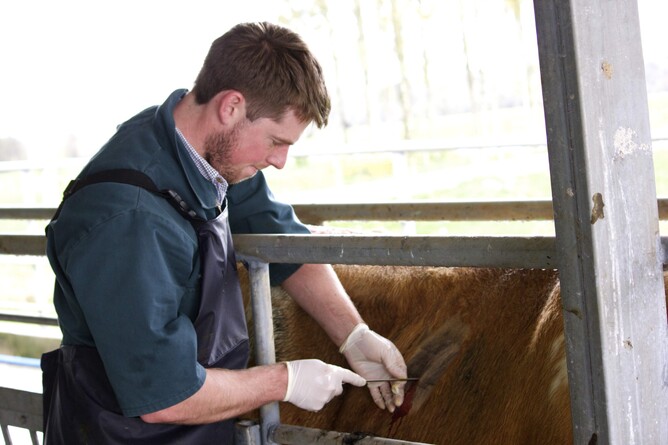Trace minerals are crucial to optimal production and animal health. Coming into autumn and winter, copper levels start to decrease, especially after the facial eczema season with zinc usage.
The liver is the storage organ for copper and the levels of copper in blood aren’t always an indication of storage levels. The liver is like a water tank and the blood is the tap - the tank can be nearly empty, but the water will still flow as if it’s full. Hence, the liver can be low in copper but the blood will show adequate levels, so, we can’t always rely on liver blood levels to assess copper status!
A pre-dry off liver biopsy to test for copper, along with blood sampling for selenium and B12, is the best way to assess your herd’s trace mineral status. Winter is a period of low availability and high demand (pregnancy and early lactation), so ensuring cows have adequate stores is key.
How does a biopsy work?
The concept of a liver biopsy can seem scary, but cows tolerate it very well and complications are rare.
We generally ask for 10 cows of varying ages to be drafted. Six will be biopsied and blood tested and the rest just blood tested.
Cows need to be well fed so the full rumen holds the liver in place against the diaphragm.
The cows are restrained in a race with access to the right hand side of the cow. A biopsy needle is inserted through the skin and muscle, between the ribs, to reach the liver and retrieve a small sample.
Local anaesthetic is used so the animal doesn’t feel the biopsy needle being inserted and pain relief is given at the same time.
No stitches are needed and cows quickly return to grazing.
When is the best time to do trace mineral testing?
The ideal times to sample herds are pre-dry off (blood test and biopsy) and one month pre-mating (blood test only). We also blood sample during transition and calving to measure calcium and magnesium levels.
Accurately knowing your animals' trace mineral status guides appropriate supplementation, avoiding under and over dosing, to get the best out of your herd.

